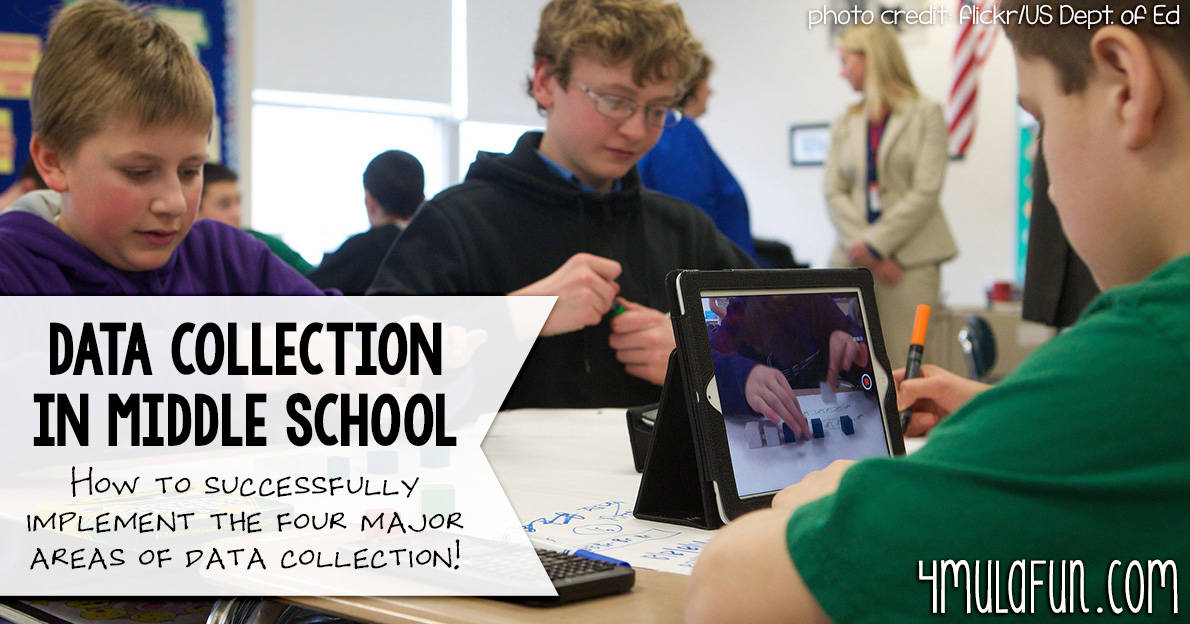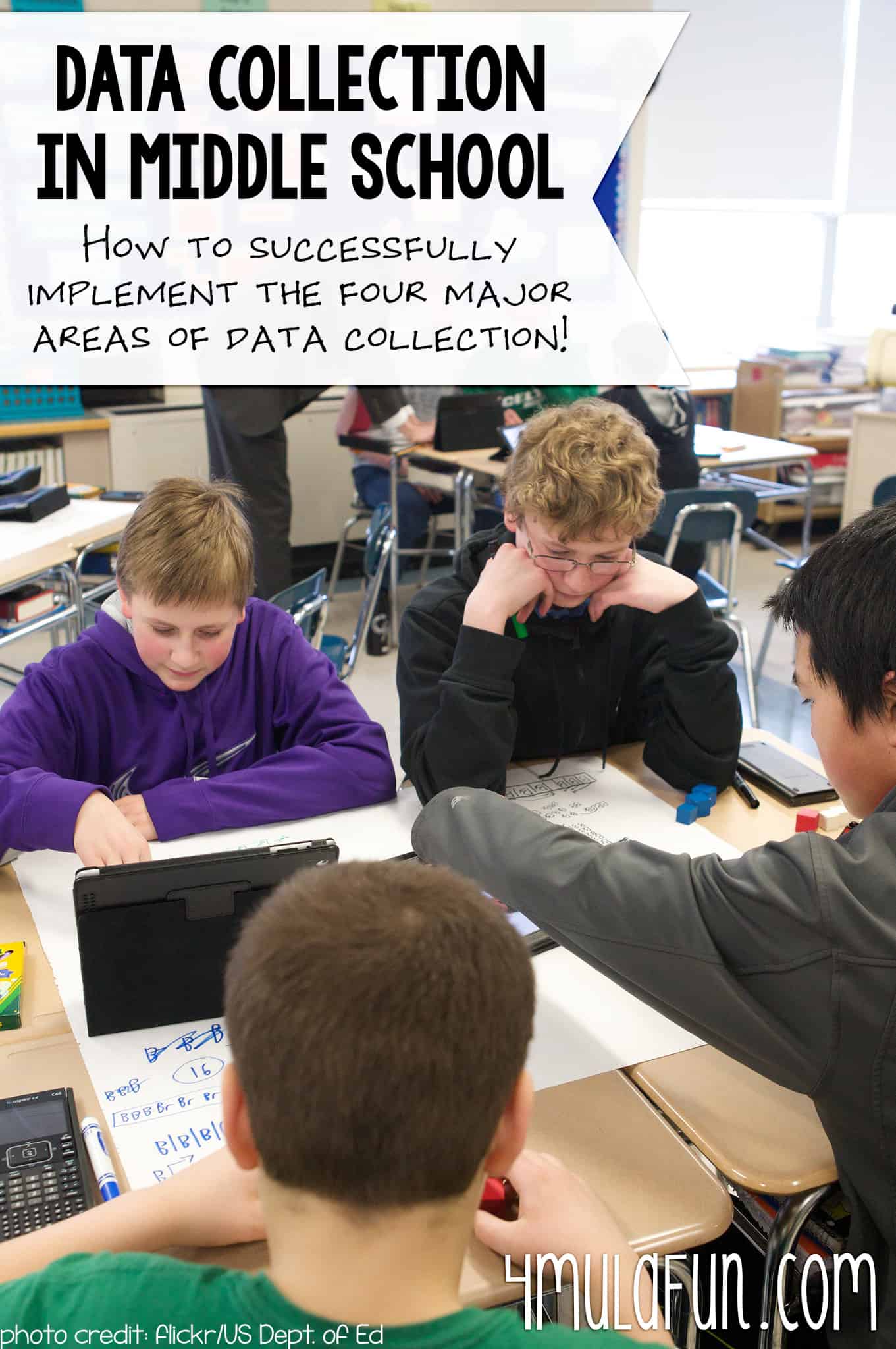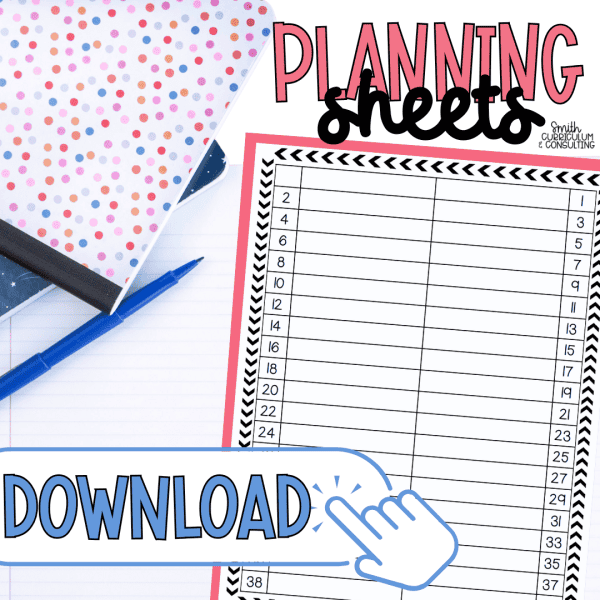 As you are teaching each year there are always various reasons that we have to collect data on our students. What types of data do you collect? Do you vary them from student to student and year to year? Do you collect a wide variety of data to make sure that you have a well rounded picture from each student?
As you are teaching each year there are always various reasons that we have to collect data on our students. What types of data do you collect? Do you vary them from student to student and year to year? Do you collect a wide variety of data to make sure that you have a well rounded picture from each student?
There are four major areas of data collection. These areas include Student Artifacts, Student Interviews, Classroom Observations and Classroom Videos. Each of these types of data collection involve many different methods that you can use to collect information from your students formally as well as informally.
Student Artifacts
The easiest type of data collection has to be Student Artifacts. An artifact is defined as “something created by humans usually for a practical purpose.” In the classroom the different types of student artifacts that can be gathered are (but definitely not limited to) student portfolios, observations, performance tasks, journals, surveys, formative or summative testing, family history and demographics.
 Each of these different student artifacts can provide different information about the knowledge base of your students. As a teacher I know that I was constantly pulling work samples from students to determine where my students were on different skills. I tried to limite the use of summative assessment as student artifacts because I know the amount of test anxiety my students have. Thankfully with the use of Interactive Notebooks it is really easy to have a portfolio of student work. Interactive Notebooks also allow me to quickly have access to perfomance tasks, journals, student observations and even formative testing. Another great method of formative testing is Exit Tickets. Like I said, this is the easiest data collection method but also one that must be extremely organized. Keeping tracking of student performance is easy with my Formative Assessment Data Trackers that are organized easily by each strand for math (Common Core and TEKS).
Each of these different student artifacts can provide different information about the knowledge base of your students. As a teacher I know that I was constantly pulling work samples from students to determine where my students were on different skills. I tried to limite the use of summative assessment as student artifacts because I know the amount of test anxiety my students have. Thankfully with the use of Interactive Notebooks it is really easy to have a portfolio of student work. Interactive Notebooks also allow me to quickly have access to perfomance tasks, journals, student observations and even formative testing. Another great method of formative testing is Exit Tickets. Like I said, this is the easiest data collection method but also one that must be extremely organized. Keeping tracking of student performance is easy with my Formative Assessment Data Trackers that are organized easily by each strand for math (Common Core and TEKS).
Student Interviews
The next type of data collection is Student Interviews. The key to getting the most out of student interviews is building a relationship that fosters a positive environment and allows for student learning. When talking with our students we can tell a lot by their body language, vocabulary usage (formal and informal), depth of knowledge about a topic, feelings portrayed and connecting themselves to the subject matter.
When we listen to the vocabulary our students use and they choose to use formal words they show us whether they understand the material to use it correctly or are attempting and not succeeding. This is a great teaching moment. The depth of students knowledge is easily discovered within their conversations with peers as well as interaction in the lesson because the details they provide directly connect with their understanding. When students are discussing a topic and they take time to relate it to themselves and talk about a relationship with something they enjoy they will definitely remember the learning experience.
Student Observations
 Another regularly used data collection method we use in the classroom is Student Observations. With student observations you are tracking their behaviors, social interactions, on task time, work habits, classroom participation, performance success, vocabulary usage, strategy usage, and student interests.
Another regularly used data collection method we use in the classroom is Student Observations. With student observations you are tracking their behaviors, social interactions, on task time, work habits, classroom participation, performance success, vocabulary usage, strategy usage, and student interests.
Several of these methods go hand in hand with methods from the student interviews approach for data collection and that is okay, in fact it is a benefit. Student behavior is an important thing for all teachers to track because you never know when you are going to need the documentation for actions you have taken to prevent such behaviors in your classroom. Having the documentation can save your butt more than you know.
Social interactions with peers and visitors in the classroom can tell you a lot about your students. Monitoring students on task time and work habits is a critical component for many. I know that my students who had 504 plans and even some with IEPs had accomodations and modification that tied into their on task time and work habits and it was important for me as a teacher to take note of what they were and were not doing.
When it comes to students using strategies in class this is an important area to document. We have all had the students who were anti-strategy use and I’ve been the teacher who was a hard-ass about it but then I have also been the teacher who was understanding and allowed students ot not use them as long as they could explain to me their thinking at any time. You as a teacher have to determine where you want to be on that spectrum.
Classroom Videos
Finally the last area of data collection is Classroom Videos. This is defintiely a more difficult way of gathering data because you must have the materials. When I was teaching second grade I wrote a project for Donors Choose to get a Flip Camera for my classroom (I know, old school now). Since I was teaching all subjects at that time I used it to document fluency of my students. I also used it during small group time and filmed students working with manipulatives and reflecting on their learning.
Other ways you can use classroom videos is to film instructional videos for your classroom. This is not only great for flipped classrooms but also to provide a different way of learning for students. They can watch a video in class and complete “preacher notes” in their Interactive Notebook based on what you have taught in the video. “Preacher Notes” are what I call fill-in-the-blank notes. I give some of the information but it requires students to actively listen to what is going on so they can complete their notes. I started calling them this because that is exactly what my preacher hands out on Sunday’s in our worship programs as he wants all of the congregation to pay attention to what he is saying.
While there are many other methods of data collection in middle school, I hope that these have sparked some ideas for you to use in your classroom as the year continues or even to start to mull over as you are organizing for next school year. When it all comes down it remember, “If you don’t record it somewhere, it did not happen.” So document, document, document!
Teach Me About Math Workshop!
Looking for all the latest about using Math Workshop in the Middle Grades? Join today and grab the FREE Editable Math Workshop Sheets and all of the great emails to come your way!
Success! Now check your email to confirm your subscription.




